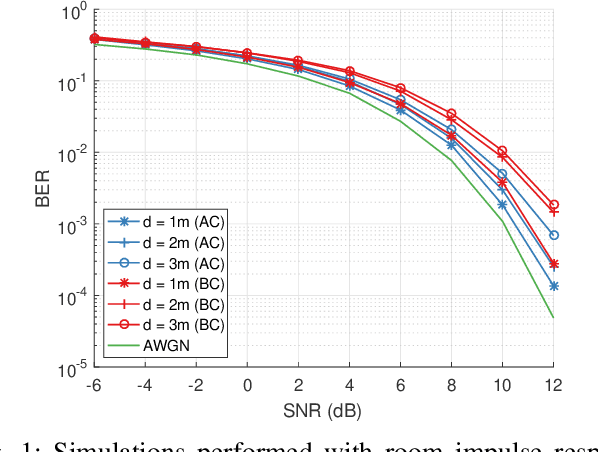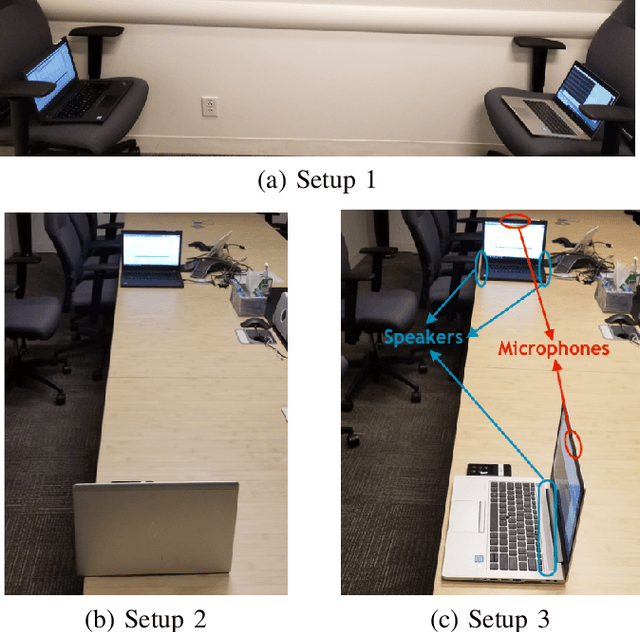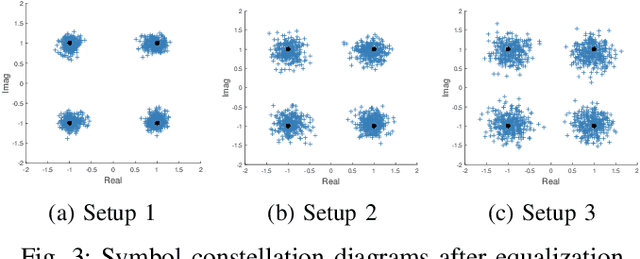Gizem Tabak
Video-Streaming Biomedical Implants using Ultrasonic Waves for Communication
Jun 28, 2021



Abstract:The use of wireless implanted medical devices (IMDs) is growing because they facilitate continuous monitoring of patients during normal activities, simplify medical procedures required for data retrieval and reduce the likelihood of infection associated with trailing wires. However, most of the state-of-the-art IMDs are passive and offline devices. One of the key obstacles to an active and online IMD is the infeasibility of real-time, high-quality video broadcast from the IMD. Such broadcast would help develop innovative devices such as a video-streaming capsule endoscopy (CE) pill with therapeutic intervention capabilities. State-of-the-art IMDs employ radio-frequency electromagnetic waves for information transmission. However, high attenuation of RF-EM waves in tissues and federal restrictions on the transmit power and operable bandwidth lead to fundamental performance constraints for IMDs employing RF links, and prevent achieving high data rates that could accomodate video broadcast. In this work, ultrasonic waves were used for video transmission and broadcast through biological tissues. The proposed proof-of-concept system was tested on a porcine intestine ex vivo and a rabbit in vivo. It was demonstrated that using a millimeter-sized, implanted biocompatible transducer operating at 1.1-1.2 MHz, it was possible to transmit endoscopic video with high resolution (1280 pixels by 720 pixels) through porcine intestine wrapped with bacon, and to broadcast standard definition (640 pixels by 480 pixels) video near real-time through rabbit abdomen in vivo. A media repository that includes experimental demonstrations and media files accompanies this paper. The accompanying media repository can be found at this link: https://bit.ly/3wuc7tk.
Uncoded Binary Signaling through Modulo AWGN Channel
May 20, 2021



Abstract:Modulo-wrapping receivers have attracted interest in several areas of digital communications, including precoding and lattice coding. The asymptotic capacity and error performance of the modulo AWGN channel have been well established. However, due to underlying assumptions of the asymptotic analyses, these findings might not always be realistic in physical world applications, which are often dimension- or delay-limited. In this work, the optimum ways to achieve minimum probability of error for binary signaling through a scalar modulo AWGN channel is examined under different scenarios where the receiver has access to full or partial information. In case of partial information at the receiver, an iterative estimation rule is proposed to reduce the error rate, and the performance of different estimators are demonstrated in simulated experiments.
High Data Rate Near-Ultrasonic Communication with Consumer Devices
Mar 20, 2021



Abstract:Automating device pairing and credential exchange in consumer devices reduce the time users spend with mundane tasks and improve the user experience. Acoustic communication is gaining traction as a practical alternative to Bluetooth or Wi-Fi because it can enable quick and localized information transfer between consumer devices with built-in hardware. However, achieving high data rates (>1 kbps) in such systems has been a challenge because the systems and methods chosen for communication were not tailored to the application. In this work, a high data rate, near-ultrasonic communication (NUSC) system is proposed to transfer personal identification numbers (PINs) to establish a connection between consumer laptops using built-in microphones and speakers. The similarities between indoor near-ultrasonic and underwater acoustic communication (UWAC) channels are identified, and appropriate UWAC techniques are tailored to the NUSC system. The proposed system uses the near-ultrasonic band at 18-20 kHz, and employs coherent modulation and phase-coherent adaptive equalization. The capability of the proposed system is explored in simulated and field experiments that span different device orientations and distances. The experiments demonstrate data rates of 4 kbps over distances of up to 5 meters, which is an order of magnitude higher than the data rates reported with similar systems in the literature.
 Add to Chrome
Add to Chrome Add to Firefox
Add to Firefox Add to Edge
Add to Edge